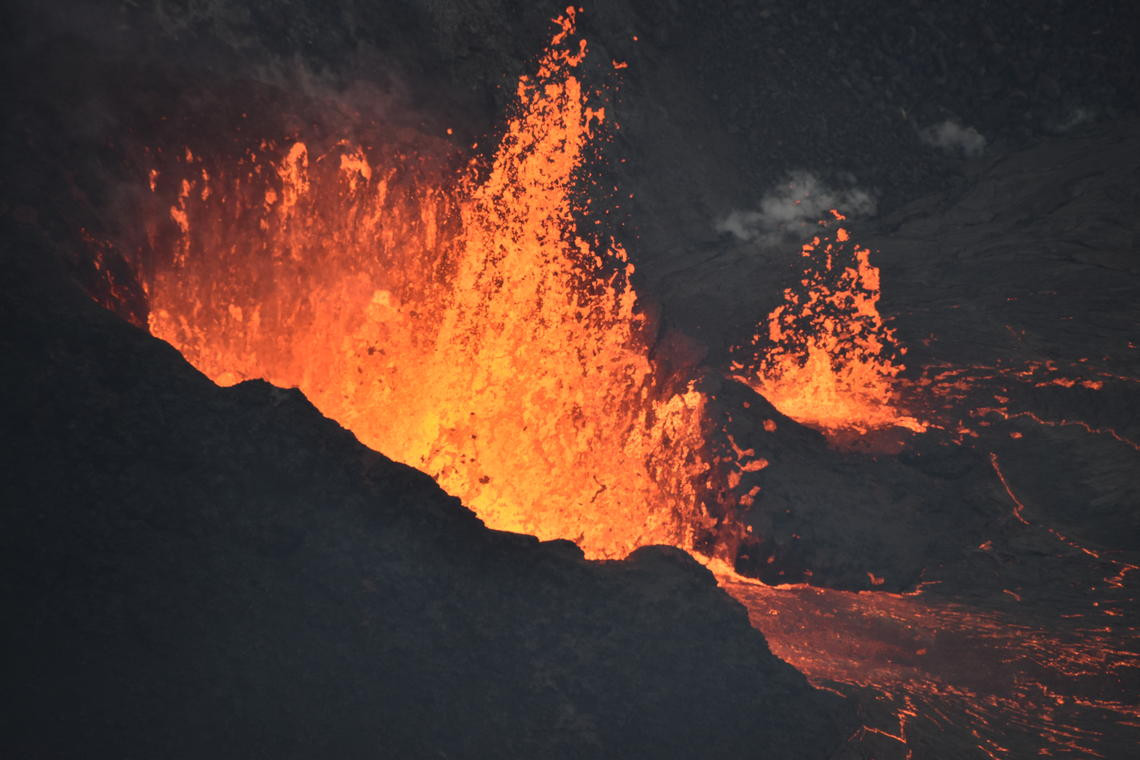
USGS: “Associated with an increase in fountaining activity at the main western vent in Halema‘uma‘u, a short-lived vent opened just to the north (right). Activity at this vent lasted about 10 hours with low-level fountaining about 3 meters (10 ft) high. Large fountaining bursts from the main vent threw lava above the height of the cone (30 meters or 100 ft), depositing spatter on the exterior slopes of the cone.” (USGS photo by B. Carr.)
(BIVN) – The eruption continues at the summit of Kilauea, and scientists are keeping a close eye on the Hawaiʻi island volcano.
USGS Hawaiian Volcano Observatory personnel are set up at the edge of the caldera, within a closed area of Hawaiʻi Volcanoes National Park, in order to monitor the activity.
From this vantage point, they collect the information for their daily updates to the public. Today, lava continues to erupt from a single vent in the western wall of the crater. All activity remains confined to the summit within the National Park. Seismicity and volcanic gas emission rates remain elevated.
HVO says the eruption at this vent has been highly variable. The persistent low fountain, only a few meters, tall was frequently interrupted by larger bursts, throwing lava more than 30 meters – or 98 feet – into the air, splashing down onto the walls of the vent cone. The vent feeds into a lava lake that yesterday saw another 2 meter – or 7 ft. – level increase.
Its all being monitored closely by the HVO geologists. During their field work, the scientists collect high-resolution videos, photos, and thermal images. They also take laser rangefinder measurements, and maintain instruments.
The work is carried out with permission from, and in coordination with, the National Park Service.
Sulfur dioxide emission rates remain high, and are the primary hazard of concern this close to the eruption. Even away from the summit, the volcanic gas produces vog that can blanket the parts of the island. The vog creates the potential for airborne health hazards to residents and visitors, damages agricultural crops and other plants, and affects livestock.
HVO will continue its work, and issue daily updates until further notice.

by Big Island Video News7:38 am
on at
STORY SUMMARY
HAWAIʻI VOLCANOES NATIONAL PARK - Geologists are perched in a closed area overlooking the Halemaʻumaʻu eruption.